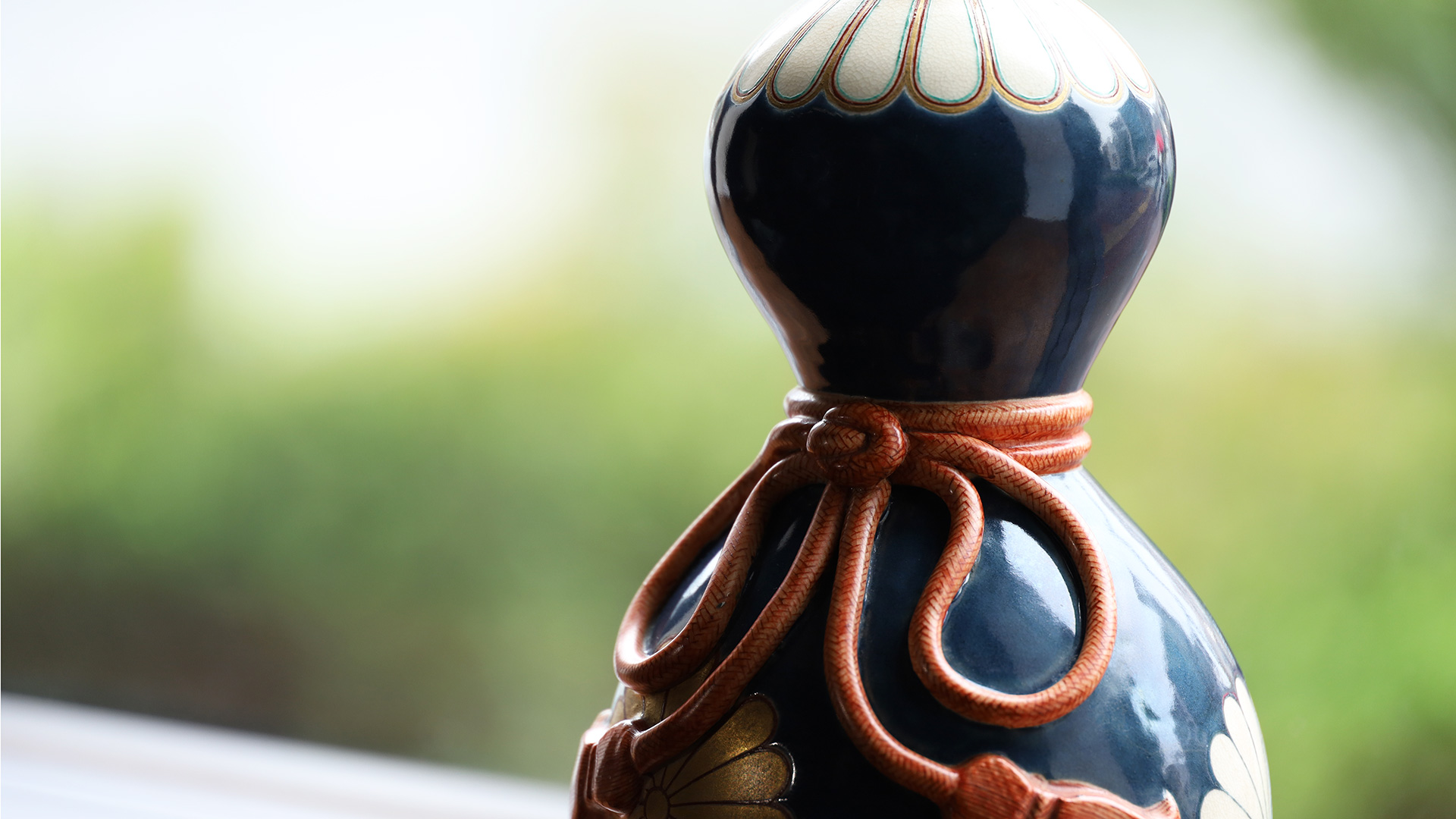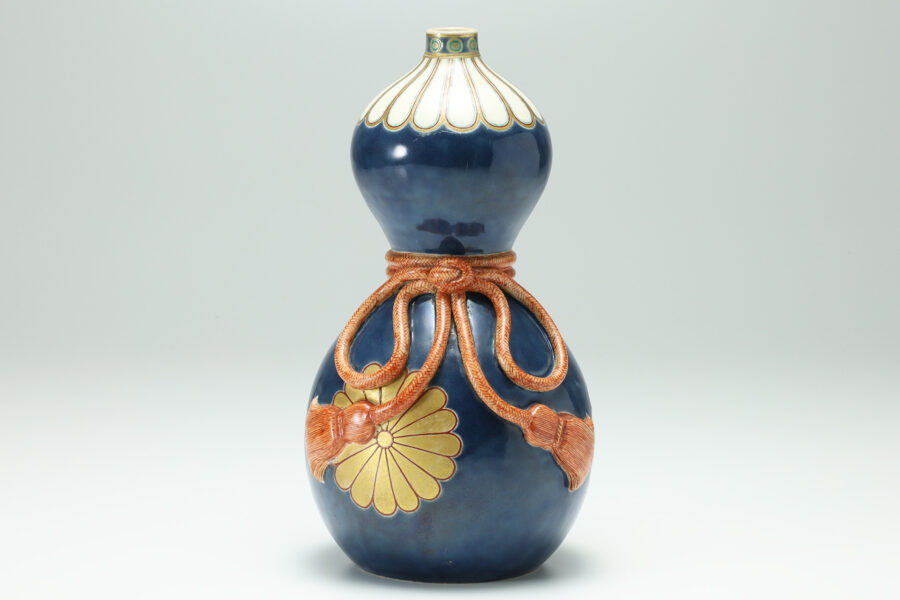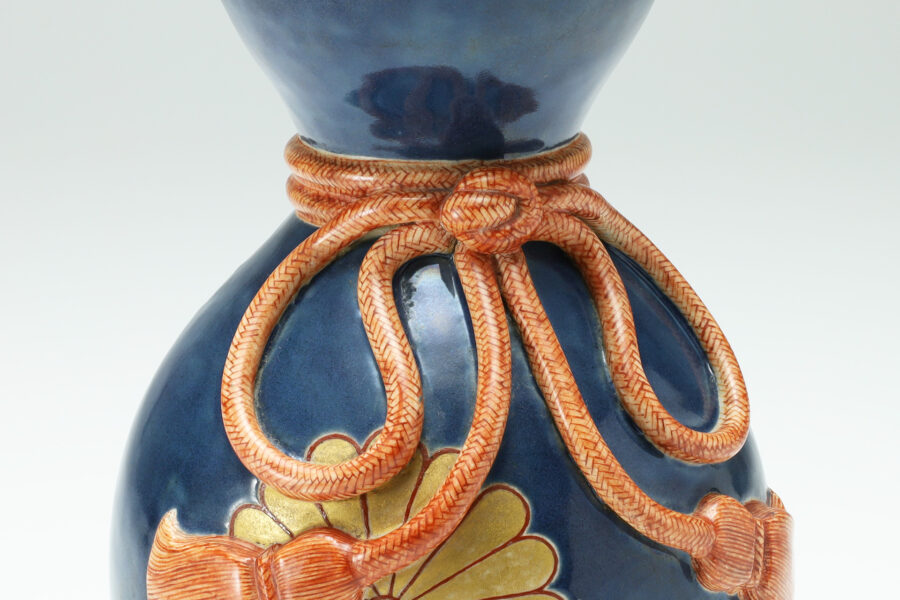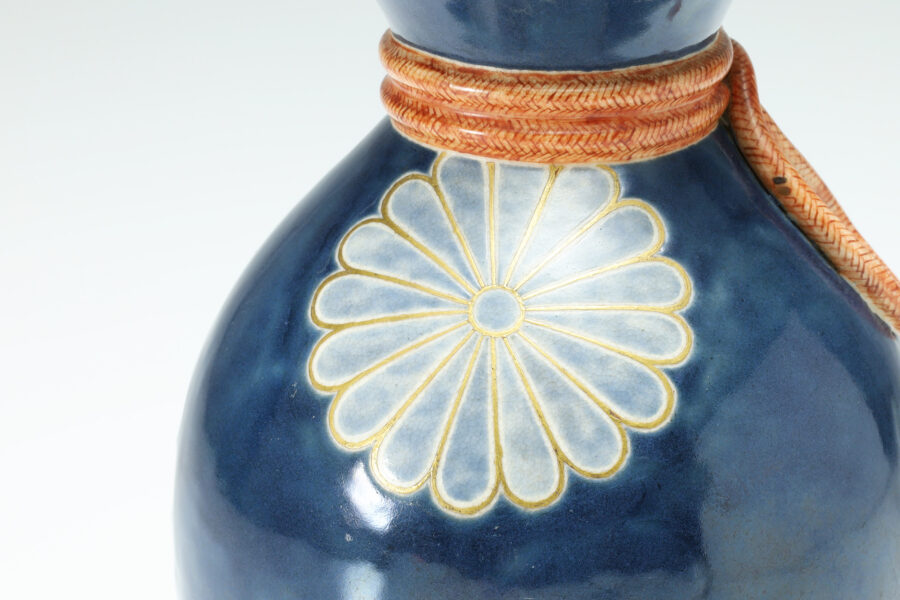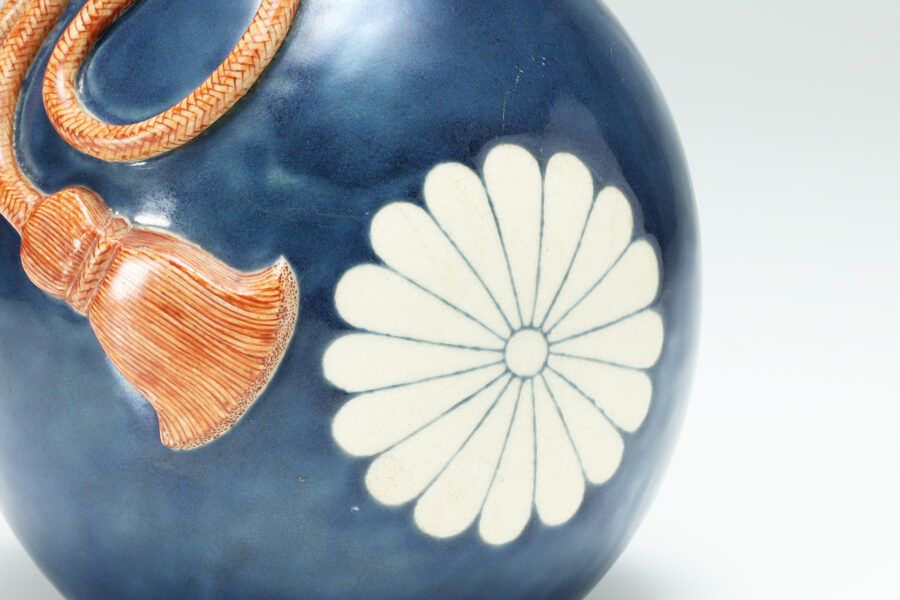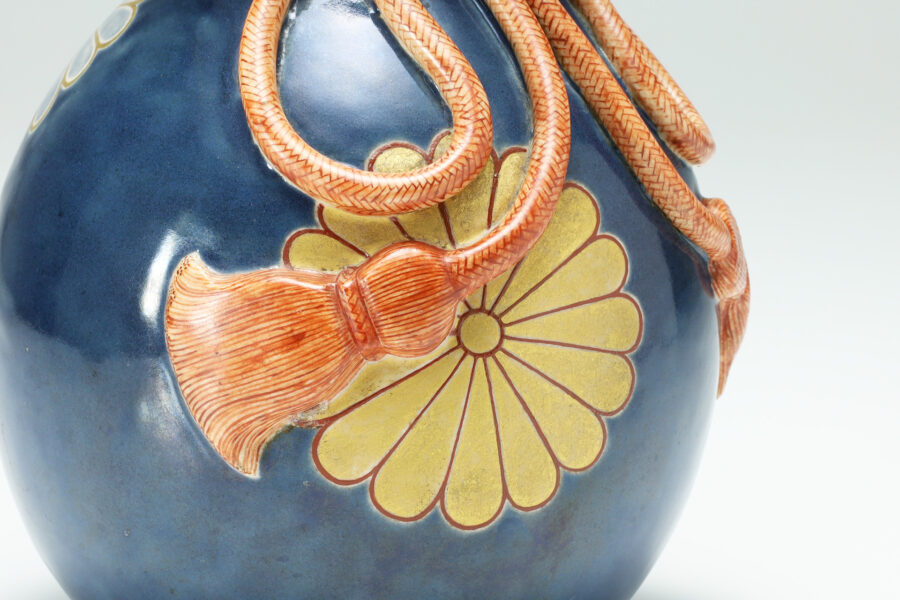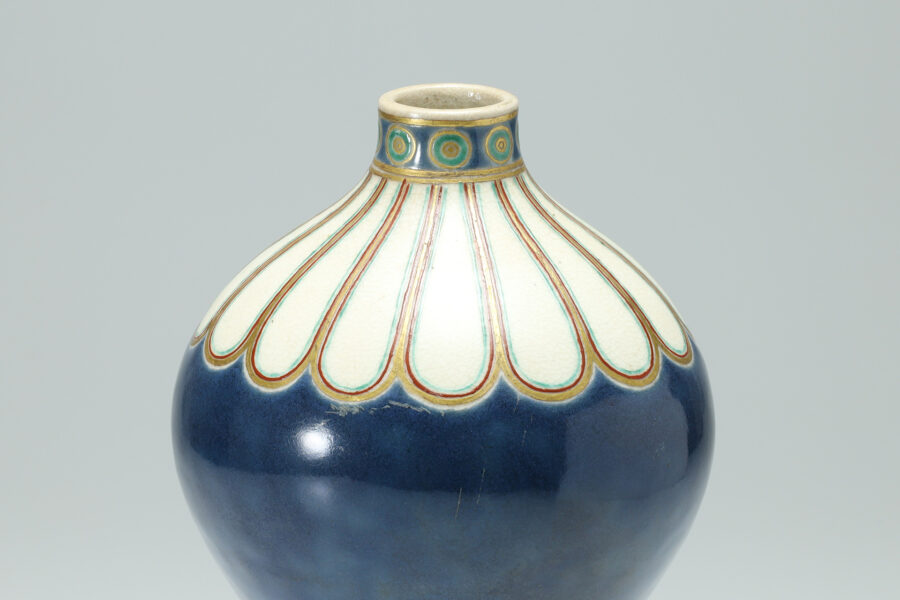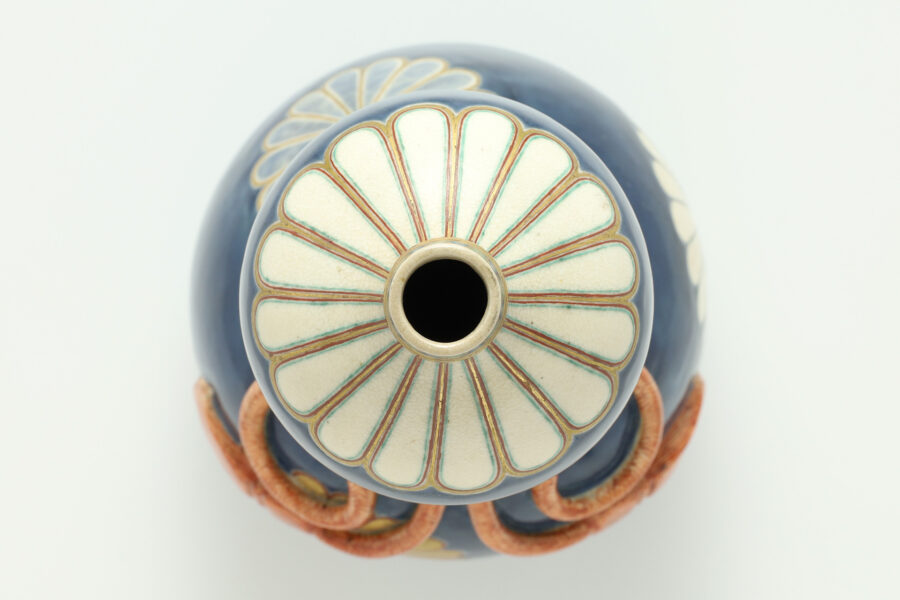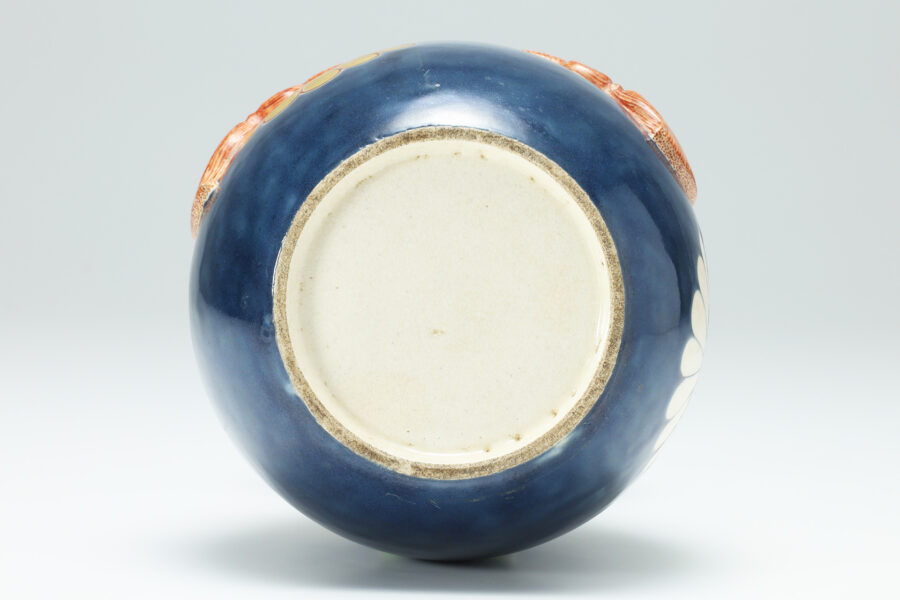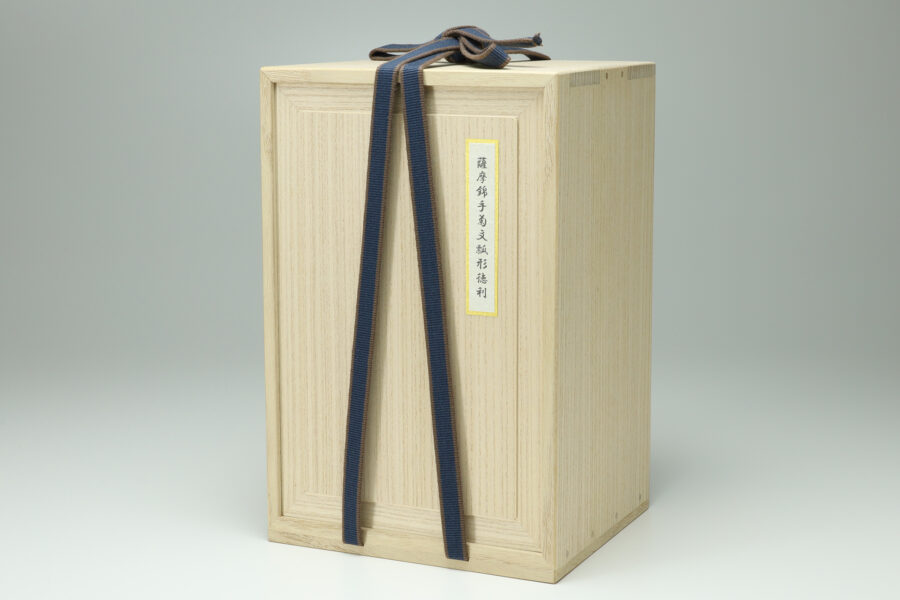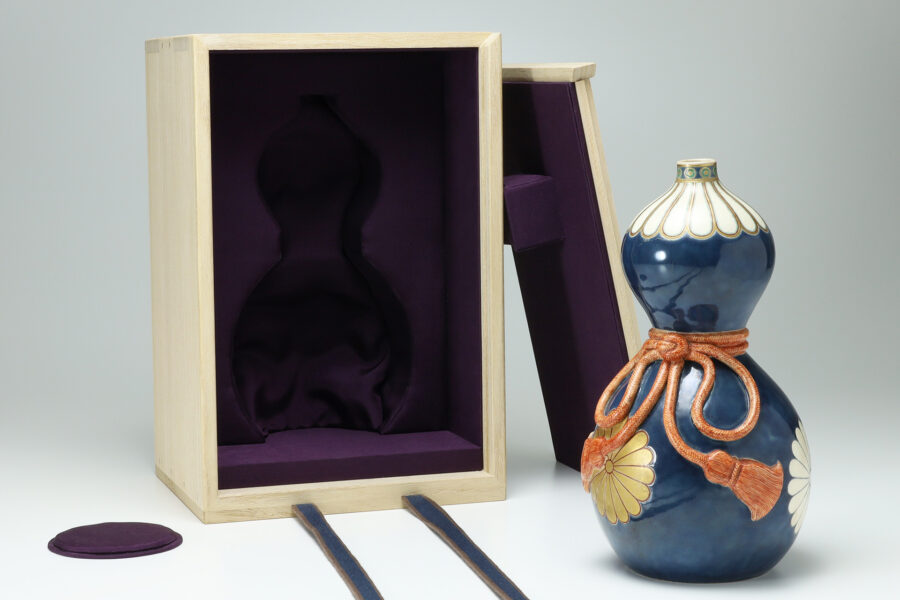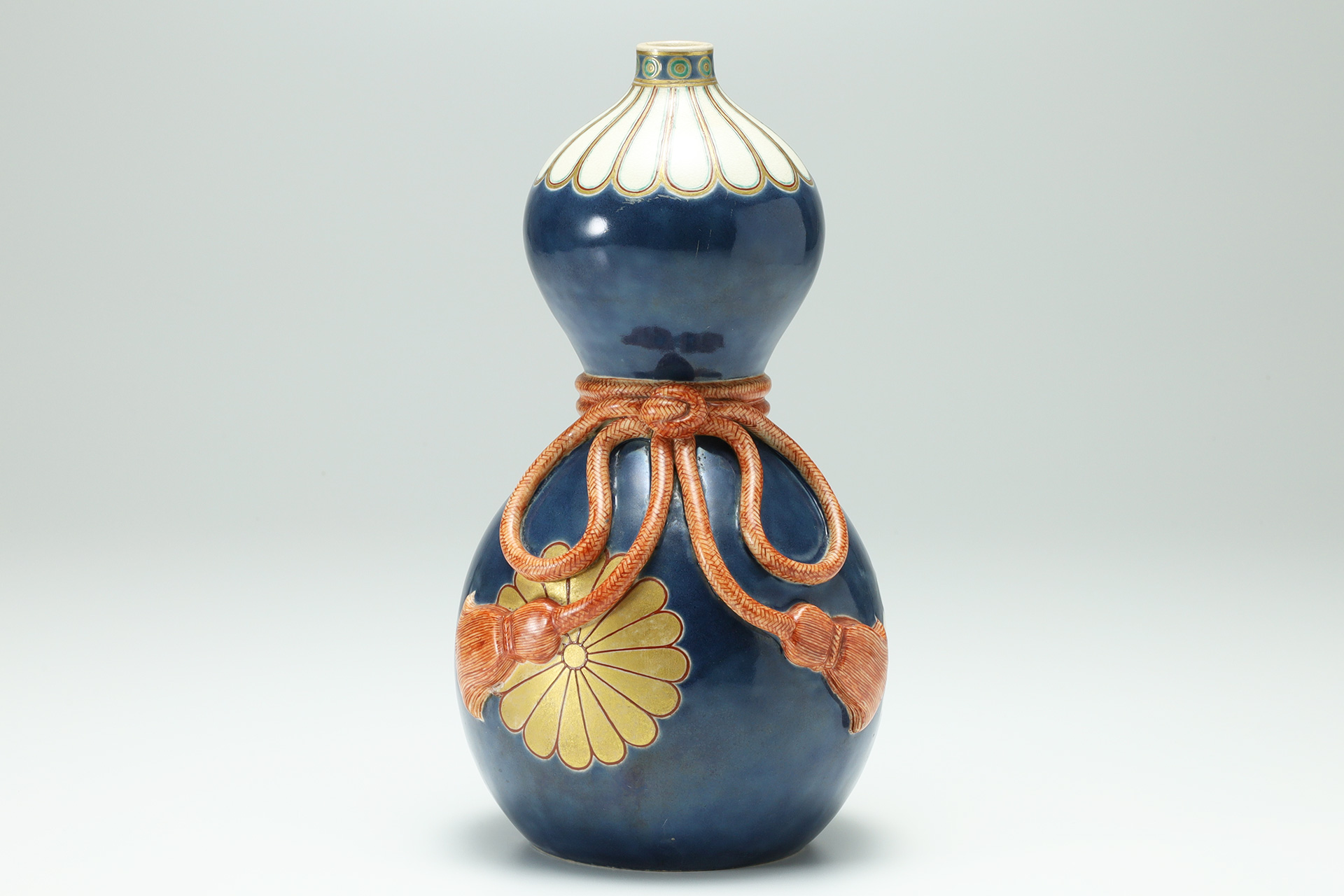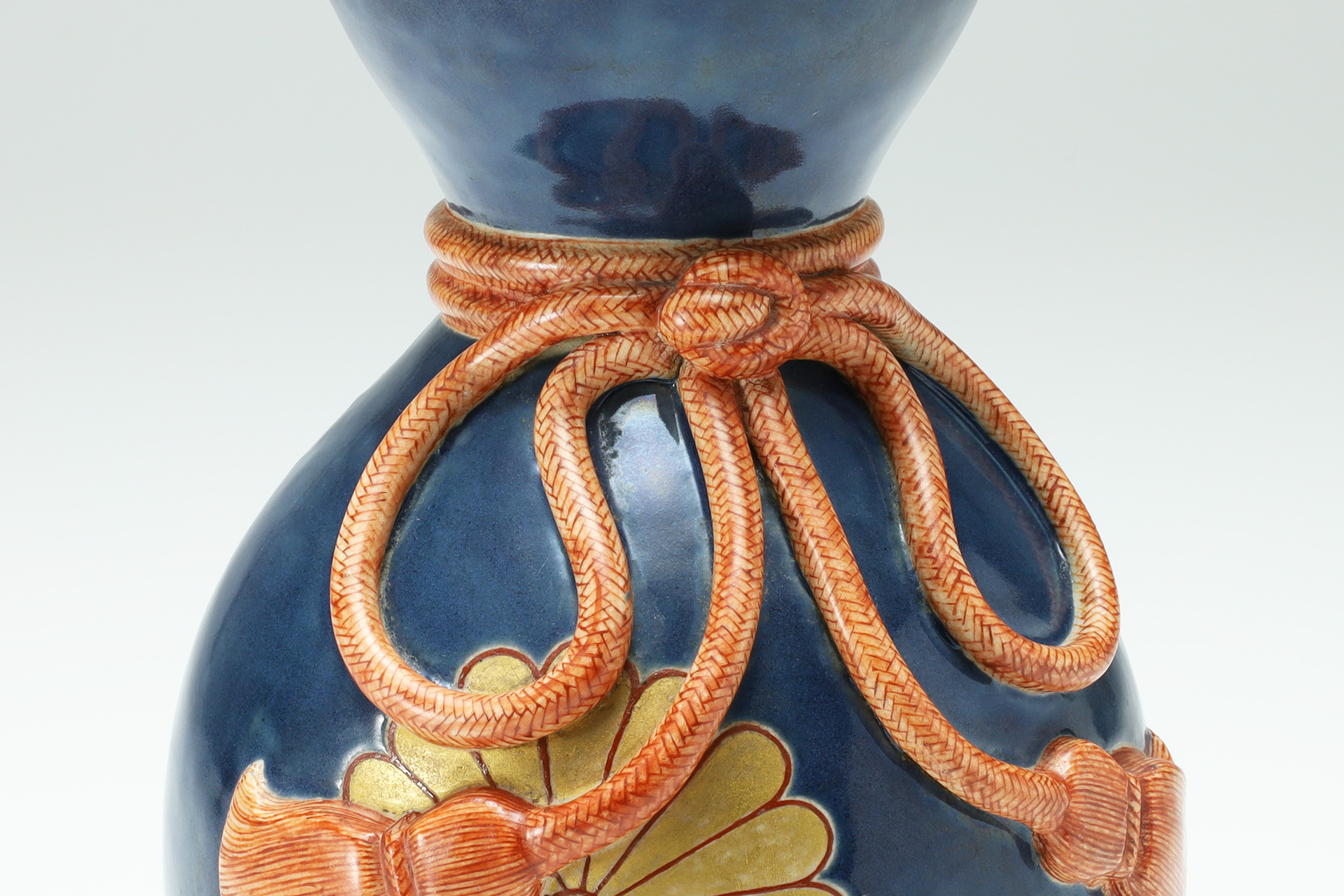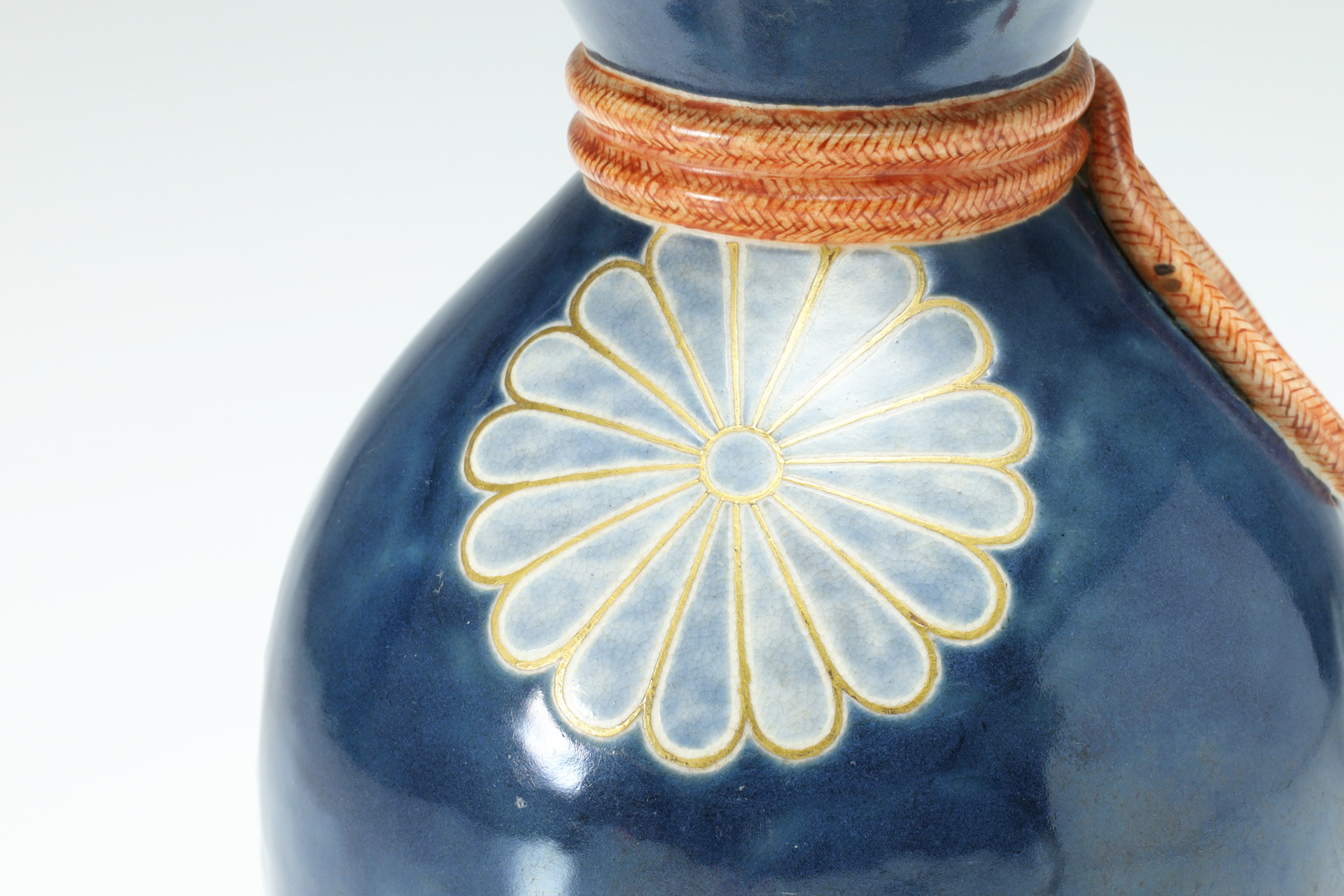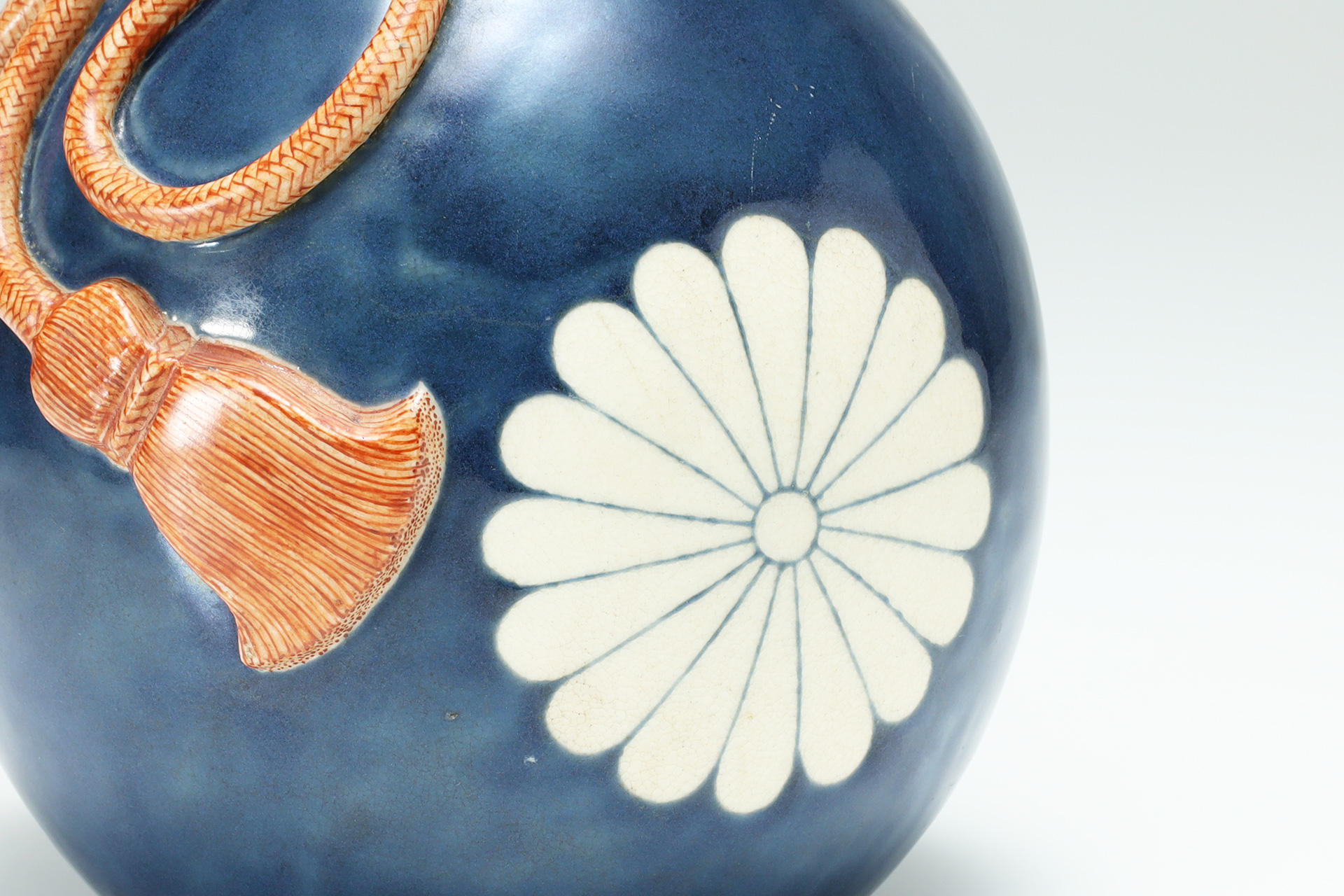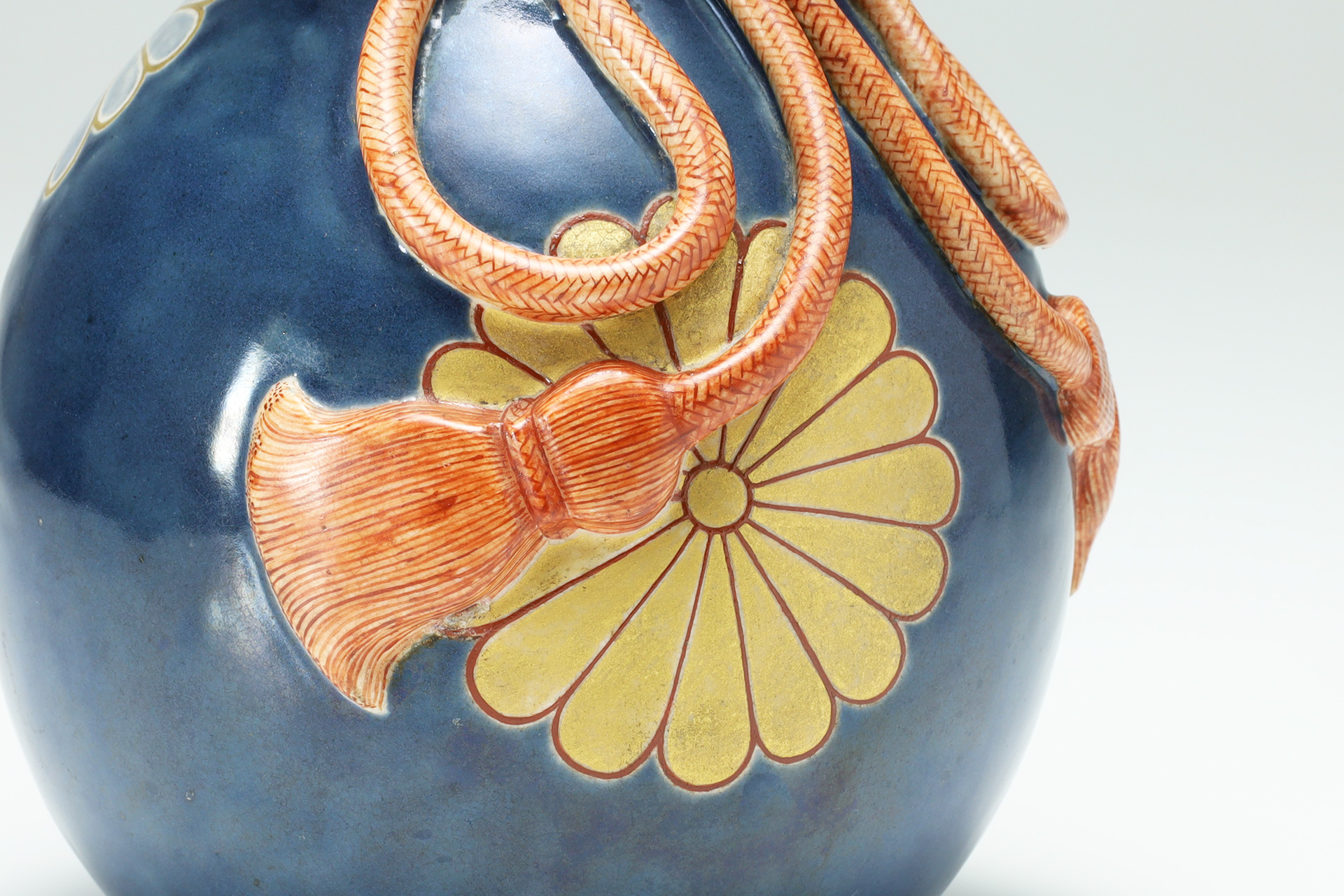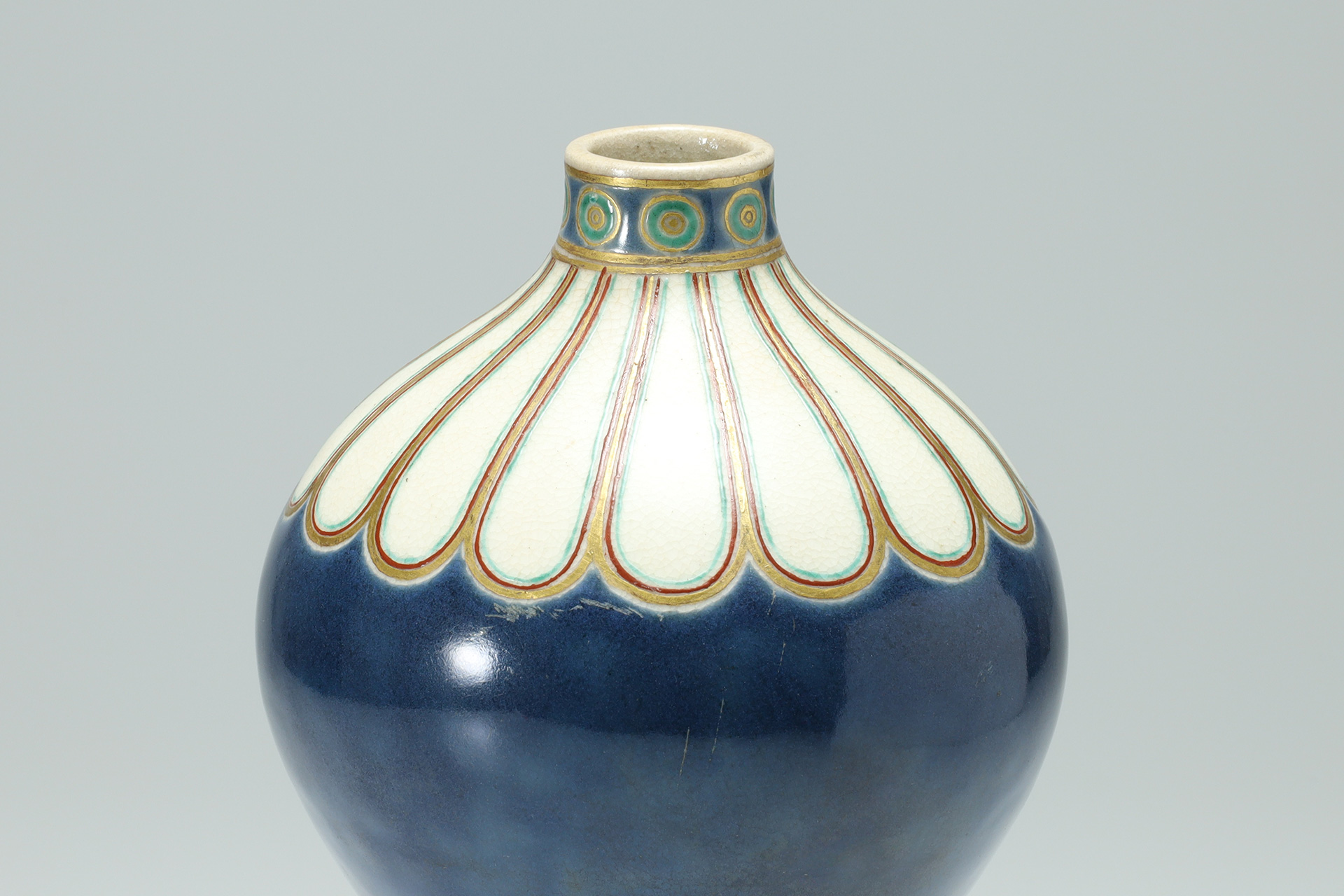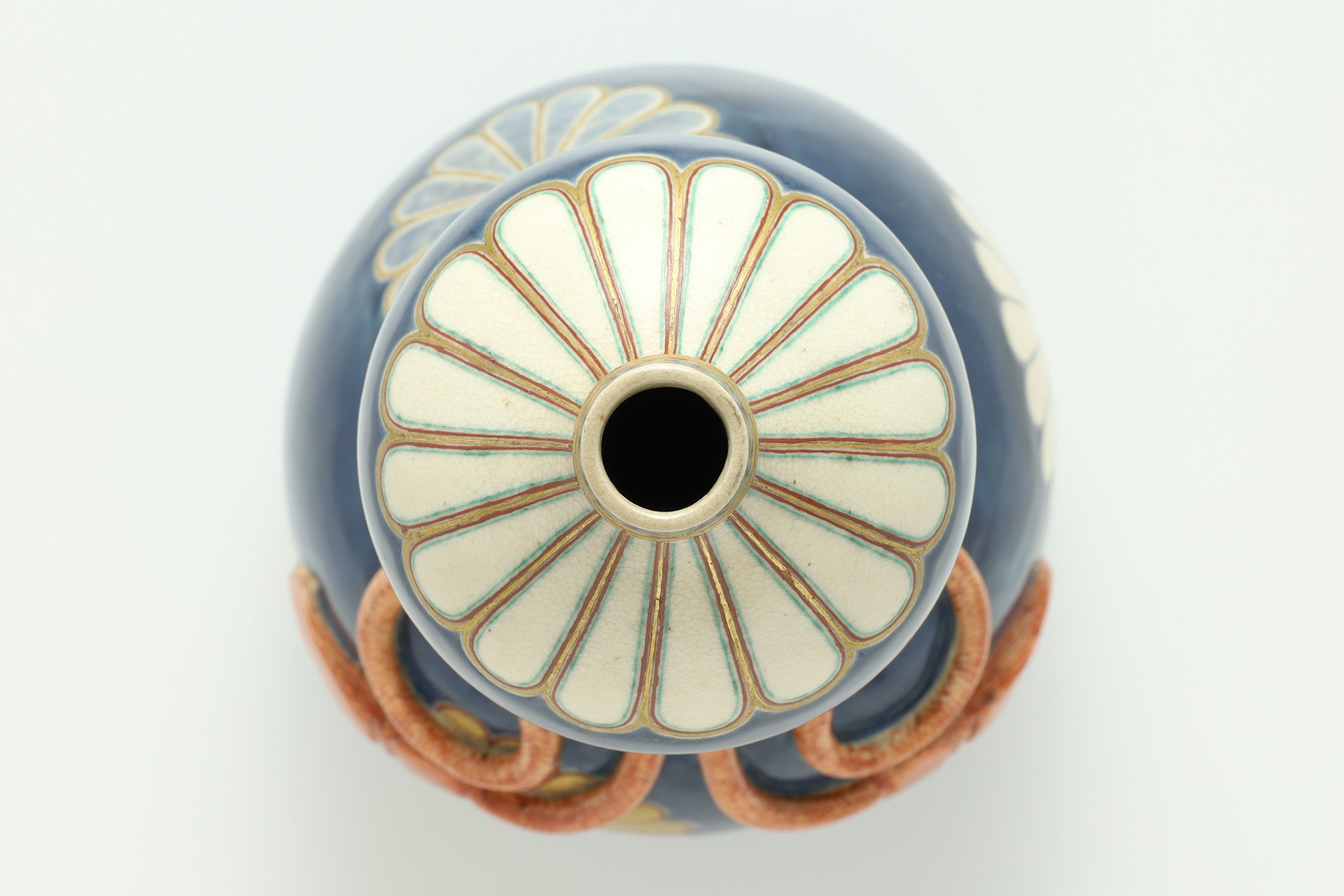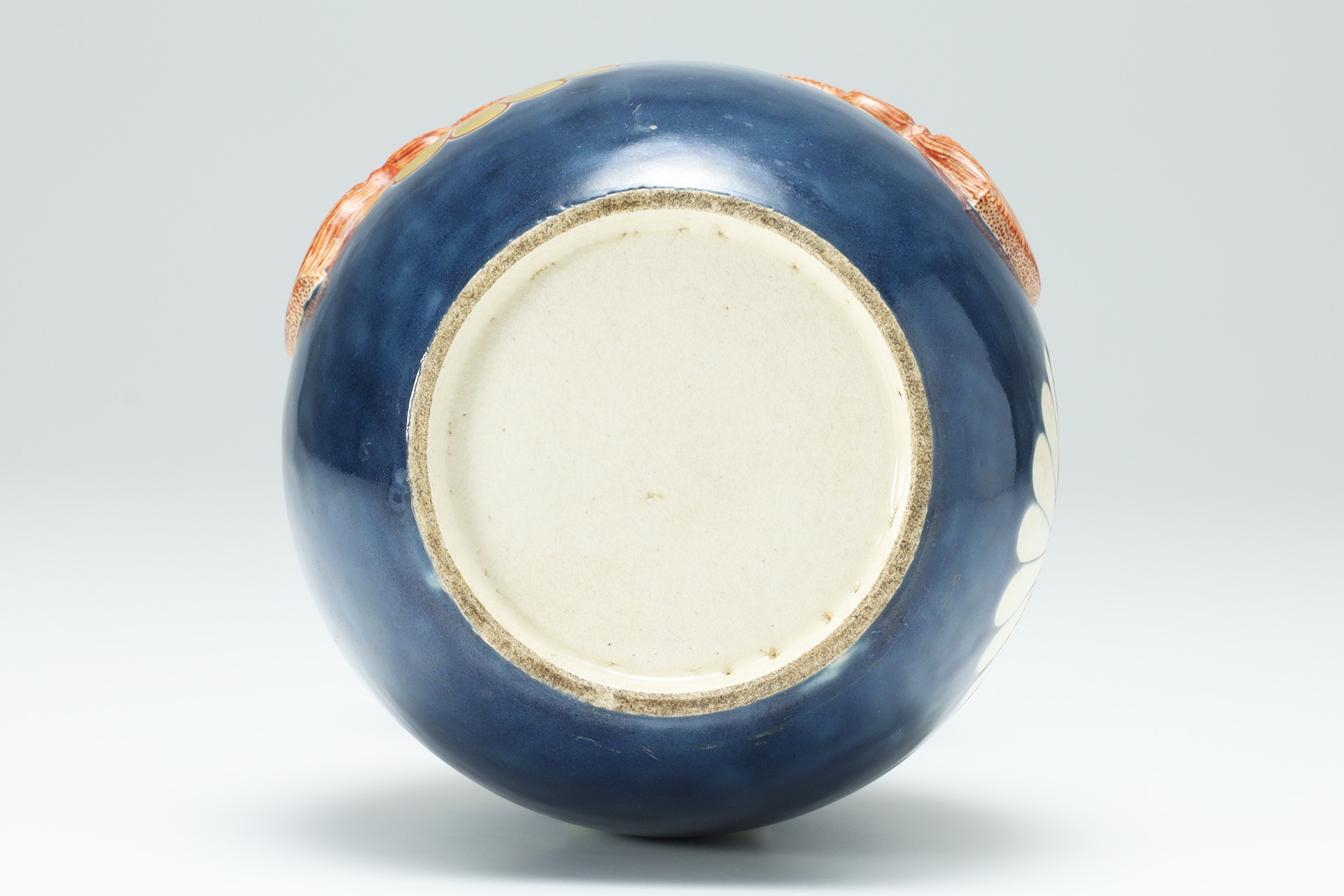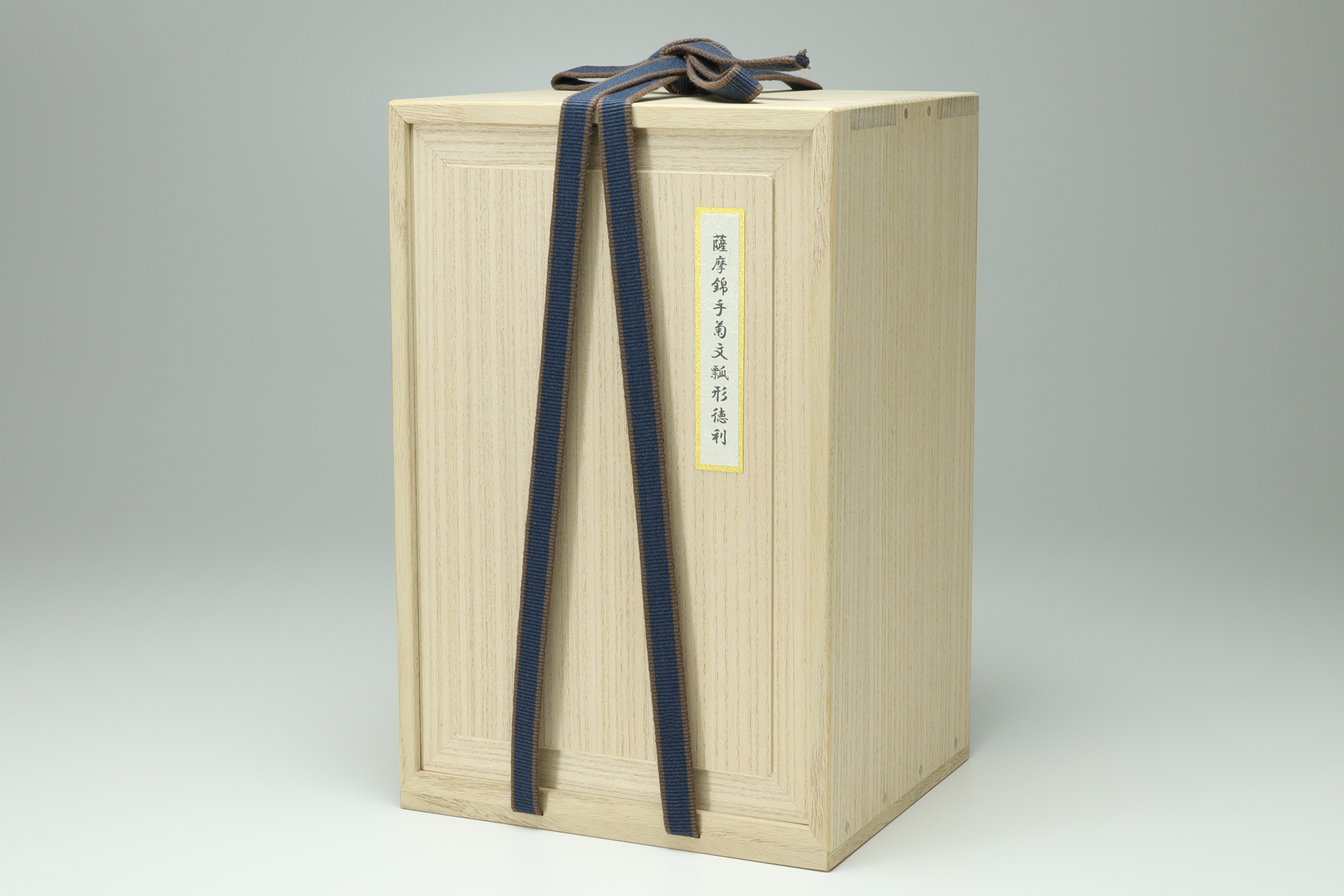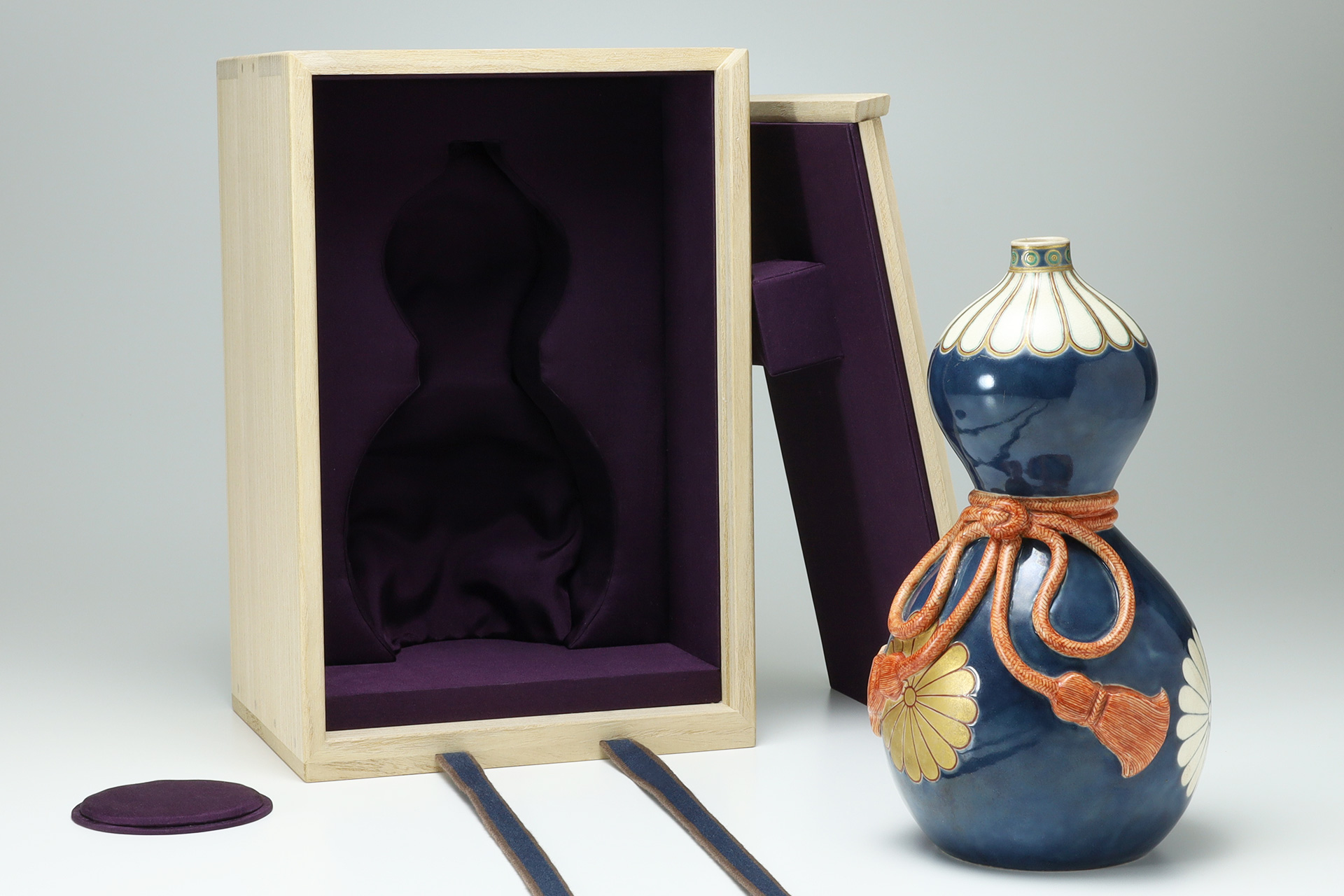The chrysanthemum design is gorgeously drawn on the beautiful lapis lazuli using a white out technique and colored glaze and gold. Whether you look at it from above or from the side, it's full of chrysanthemums. The vibrant stringwork gives the vessel a more three dimensional character. Gourds have been considered lucky charms since ancient times, and have been widely used as talismans to ward off disasters, bring good fortune, and ward off evil spirits. Three in a row is said to be "Three Beats of Gourd'', and six in a row is said to be "Good Health", and because the vines grow and bear many fruits, it also means prosperity of descendants.
Inquiry
- Product Code
- 230903-2
- Period
- Edo-Meiji Period
19th century
- Weight
- 520g
- Body Diameter
- 10.9cm
- Top Diameter
- 1.9cm
- Height
- 20.0cm
- Body Diameter
- 7.0cm
- Description
- Paulonia Box
- Condition
- Excellent Condition
It meets the requirements of the excellent work with its beautiful shape, calm and soft texture, and brightly colored glaze.

薩摩焼
薩摩焼とは薩摩国鹿児島藩島津家の庇護の下に御用焼として焼成された陶磁器です。
桃山時代における特筆すべき文化の一つは千利休による茶道確立と侘び茶の流行です。
利休門下の茶人として知られる17代当主・島津義弘も自領内での茶陶焼成を試みました。
文禄・慶長の役で朝鮮半島から陶工を召致してきた事が開窯の契機となっています。
薩摩焼諸窯は主に竪野焼、苗代川焼、元立院焼、龍門司焼、平佐焼に大別されています。
「黒薩摩(黒物)」と「白薩摩(白物)」を主体とし、
古帖佐、火計り手、宋胡録手、蛇蝎釉、鮫肌焼、錦手(金襴手)等の多彩な種類が知られています。
18世紀には平佐焼が興り、色絵や染付を中心とした華麗な装飾磁器が展開されました。
豪華絢爛の錦手は竪野系(藩窯)の窯で開発が進められ、19世紀に入って隆盛を極めました。
1855(安政2)年に28代当主・島津斉彬は、
鹿児島市吉野町磯の別邸内に「磯窯(磯御庭焼)」を開窯しました。
斉彬は富国強兵・殖産興業を目的とした集成館事業として、
薩摩焼においても苗代川焼の朴正官を召致して試験改良や開発研究に従事させた結果、
白盛絵具の実用化や金盛技法の確立によって錦手の完成に大きく寄与しました。
1857(安政4)年には薩摩藩営陶磁器製造所の支部が苗代川に設立され、
12代沈壽官が磁器方主取に任命されました。
磯窯は1863(文久3)年の薩英戦争で閉窯しました。
この薩英戦争を機に薩摩国と英国は協定を結びます。
1858(安政5)年に江戸幕府はアメリカとの間に日米修好通商条約を締結し、
次いで、オランダ、ロシア、イギリス、フランスとも修好通商条約を締結しました。
1859(安政6)年に長崎港、函館港(北海道)、横浜港(神奈川県)が開港され、
1868(明治元)年に神戸港(兵庫県)、新潟港が開港されると諸外国との貿易が開始されました。
1867(慶応3)年、鹿児島藩は朴正官の「錦手花瓶」をパリ万国博覧会に出品しました。
更に1873(明治6)年のウィーン万国博覧会に出品された12代沈壽官の錦手が好評を博し、
名声は飛躍して世界を市場にした薩摩焼の大盛況時代を迎えました。
この華麗な装飾陶器は「SATSUMA」の商標で輸出され、欧米諸国で特に愛好されました。
このように好評を博した事から其々の土地でも薩摩風陶器は生産され、
「本薩摩」に対し、「京薩摩」、「大阪薩摩」、「横浜薩摩」、「東京薩摩」等と呼ばれています。
しかし、1897(明治30)年前後から急速に人気を落として衰退の傾向を辿り、
大正年間(1912~26)には欧米諸国の需要を殆ど失いました。
要因は大量生産による粗製乱造であったとされています。
近代、錦手は主な輸出先であった欧米諸国から相次いで里帰りしています。
現在は15代沈壽官を中心とし、その伝統を受け継いでいます。
Chrysanthemum
The chrysanthemum was introduced from china as a medicinal herb during the nara period. In the heian period, during the chrysanthemum festival(9th day of the 9th month of the lunar calendar), a “Chrysanthemum Viewing Banquet” was held in the imperial court to pray for longevity by drinking chrysanthemum sake, and songs about chrysanthemums were composed. The story of the noh play “Kikujido” is that he became immortal by drinking the dew of a chrysanthemum, and kikusui was associated with good luck for longevity. This was appreciated by successive emperors and was incorporated into the imperial family crest(16 heavy valves). It is also included in the “Four Gentlemen(chrysanthemum, orchid, bamboo, plum)”, whose beauty is compared to a gentleman as a noble flower, and a gentleman refers to a person with high virtue and dignity. It is also one of the “Five Friends(chrysanthemum, orchid, bamboo, plum, lotus)” and “Three Fragrances (chrysanthemum, orchid, daffodil)”. “Kikusui” is a japanese favorite design that depicts chrysanthemums floating in flowing water, and is also famous as the family emblem of Masashige Kusunoki, a military commander during the nanbokucho period. “Kikutori”, which is representative of kodaiji makie, is based on a chinese legend in which auspicious birds gather in paulownia trees.



